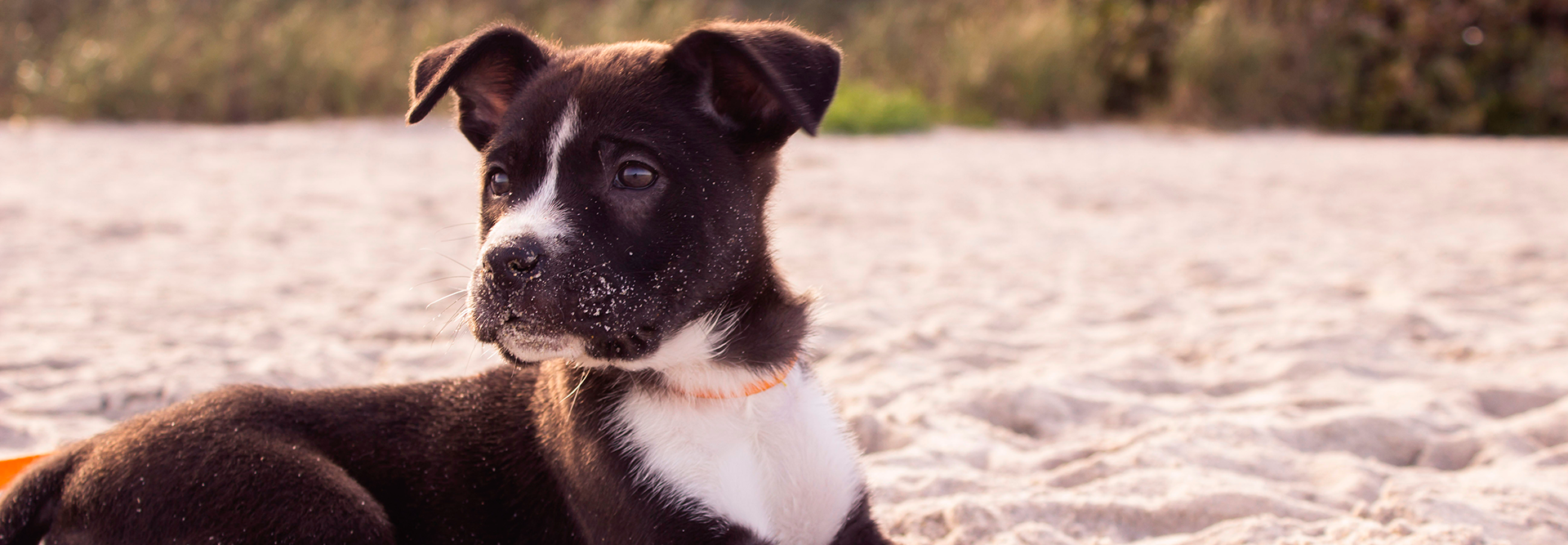
June 1st marks the start of hurricane season on the Atlantic Coast. Although we live in Florida (and most of us are used to the occasional summer storm), it’s important to prepare for any potential surprises that may occur at any time. You never know when a tropical storm could strengthen into a hurricane overnight—it’s […]
June 1st marks the start of hurricane season on the Atlantic Coast. Although we live in Florida (and most of us are used to the occasional summer storm), it’s important to prepare for any potential surprises that may occur at any time. You never know when a tropical storm could strengthen into a hurricane overnight—it’s better to be safe than sorry! While you begin collecting supplies and looking up local evacuation shelters, don’t forget to take your puppy’s safety into consideration. Hurricanes, like all natural disasters, are not exactly fun things to be caught in and can be deadly for anyone, including your puppy.
With enough preparation and thought, you can be one step ahead in protecting your furry friend this hurricane season. Here are 6 tips that ensure your puppy’s safety:
Make sure you have a plan set in place that’s easy to follow with your puppy. This plan should include steps you need to take to help you and your puppy get to safety in cases of flooding. It should also list out all essential supplies you may need, such as water, food, and blankets. Be sure to research local shelters and think about hypothetical scenarios, especially if you make the decision to stay in. Websites like Florida Disaster and PetsWelcome include listings of pet-friendly shelters based on location. We also recommend keeping your supplies in a safe place in your home where you can access them at any time.
If your area is a high-risk, flood-prone zone, remember to heed the warning and evacuate with your puppy to a nearby shelter. Pet-Friendly Evacuation Centers (PFEC) are available for residents living in these areas. Most of these shelters permit dogs and other pets, such as cats and rabbits. Puppies are not allowed to roam inside the shelters during the storm. Instead, the owner is required to contain their fur-babies inside a crate or kennel. A family member must remain with your puppy at all times. Your puppy will also be evaluated for any potential safety risks, such as vaccinations and medical treatments. PFEC locations are usually announced as soon as they are opened and before the storm’s arrival. Make sure to track the news for the latest information on the storm and open evacuation shelters.
A pet emergency kit is pretty similar to a person’s. Most kits contain sufficient water, non-perishable food, puppy pads, food bowls, leash, crate/kennel, collar, toys, and medicine for at least three days or more. These supplies may also vary depending on your puppy’s age, breed, and size. You may purchase a pet emergency kit or make one yourself. The CDC has an annual pet disaster kit checklist of all items you should include in your puppy’s kit. If you plan to go to a pet-friendly evacuation shelter, don’t forget to bring medical records that detail your puppy’s vaccinations and health evaluations. Make sure you also have annual rabies vaccinations records for your puppy as well as a visible dog license.
Never leave the house with your puppy if they don’t have an ID and microchip. An ID and microchip help keep your furry friend safe, especially in the chaos of hurricane season. If your puppy gets lost, you help ensure your pet is reunited with you. Always place your fur-baby’s ID tag on their collar (not their bandana or leash). Microchipping your pet is a relatively painless process that has more benefits than detractors. Both forms of ID must contain your latest information to help locate and bring your pet to you. You can check out more about why ID tags are important for your pet through our blog, Why Puppy ID Tags Are Important.
Stay tuned to the news to stay updated on the latest information. If your area is high-risk and you’re told to evacuate, we highly recommend doing so at the first warning. You may not think it’s a huge deal but delaying evacuation could be dangerous, especially if your area is prone to floods or storm surges. Bring backpacks that fit you and your puppy’s supplies, and make sure you know where nearby pet-friendly shelters are.
Most importantly, whether you decide to stay and ride out the storm or evacuate to a shelter, stay calm at all times. If you’ve prepared yourself and your puppy, there is absolutely nothing to fear. Remember: your puppy is clever and can sense your emotions quickly. They will sense any negative emotion you may feel, which can cause them to become scared or anxious. A puppy parent who is calm and positive helps your furry friend stay calm too. Of course, going to an evacuation shelter or hearing the sound of wind and debris outside can be stressful to your puppy. If these situations cause your puppy to become anxious (check for panting, pacing, and trembling), you can try talking to them in a soft, soothing voice.
It’s tragic to hear stories of pets being left behind by their owners to fend for themselves during natural disasters. When Hurricane Harvey made landfall in 2017, thousands of dogs and other pets were abandoned by their owners or orphaned. By taking the necessary steps to prepare your puppy for the possibility of a hurricane, you can guarantee that they are safe and sound from any harm.
Thunderstorms can be frightening for many puppies and pets. Check out our blog, How to Calm Your Puppy During A Thunderstorm for tips on how to calm your puppy down during thunderstorms.